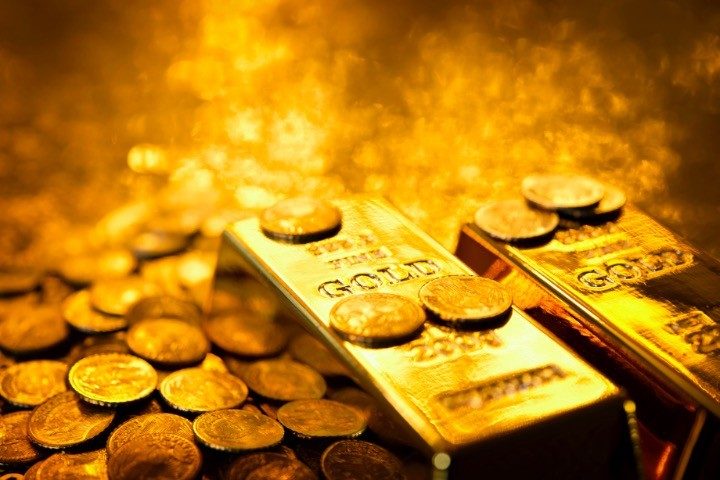
Shifting conditions in the global gold market further suggest that the West is being left behind as Eastern institutions ascend.
The price of physical gold has risen to an all-time high as central banks, particularly China’s, are rushing to buy up the gold that Western investors are quick to part with. This is resulting in a major gold transfer from West to East, and is indicative of the growing global de-dollarization trend.
Gold, of course, has long served as the ultimate repository of worth, and has been closely associated with the notion of “currency” all throughout history. Transactions frequently relied on either gold directly or on banknotes supported by gold and instantly interchangeable with it. Fiat currencies, lacking tangible backing and reliant solely on governmental edict, have historically demonstrated a propensity for eventual collapse.
A major shake-up occurred with the Bretton Woods agreement. Established in 1944, Bretton Woods was a landmark international monetary system purportedly designed to promote economic stability and facilitate post-World War II reconstruction and development. The conference took place in Bretton Woods, New Hampshire, and involved representatives from 44 Allied nations.
Key features of the Bretton Woods system included fixed exchange rates tied to the U.S. dollar, which was pegged to gold at $35 per ounce. This meant that participating countries agreed to maintain their currency values within a narrow range relative to the dollar, and the United States committed to redeeming dollars for gold upon request from foreign central banks.
The International Monetary Fund (IMF) and the International Bank for Reconstruction and Development (IBRD), now part of the World Bank Group, were also established as part of the Bretton Woods agreement. The IMF aimed to provide stability in the international monetary system by monitoring exchange rates and providing financial assistance to member countries facing balance-of-payment problems. The IBRD focused on providing loans and technical assistance for post-war reconstruction and development projects.
But the Bretton Woods system collapsed in the early 1970s due to several factors, leading to the end of fixed exchange rates and the gold standard.
America faced mounting trade deficits and inflationary pressures during the 1960s, leading to concerns about the value of the U.S. dollar. Foreign central banks began to accumulate excess dollars as reserves, leading to a “dollar overhang” and concerns about the ability of the U.S. to maintain its commitment to redeem dollars for gold at the fixed rate of $35 per ounce. Investors and central banks began to question the credibility of the fixed-exchange-rate regime, leading to capital flight and pressure on currencies pegged to the dollar.
Moreover, the U.S. gold reserves dwindled as foreign central banks redeemed dollars for gold. This loss of gold reserves further undermined confidence in the U.S. dollar’s convertibility into gold at the fixed rate, as it became increasingly clear that the America might not have enough gold to honor its commitments.
Ultimately, in 1971, President Richard Nixon announced a series of measures collectively known as the “Nixon Shock.” These measures included the suspension of the dollar’s convertibility into gold, effectively ending the gold standard. This decision, known as the “closing of the gold window,” marked the official end of the Bretton Woods system.
But the BRICS bloc (Brazil, Russia, India, China, South Africa, Egypt, Ethiopia, Iran, and the United Arab Emirates), led by Moscow and Beijing, appears to be moving back to gold as being at the heart of their financial system. As Henry Johnston writes in a piece published by Russia Today:
Let’s now zoom out a little bit and try to put this into some kind of perspective. The first obvious point here is that gold pricing is increasingly being determined by demand for physical gold rather than mere speculation. Let’s be clear: the People’s Bank of China is not loading up on 25:1 leveraged gold futures contracts with cash settlement. Neither is Russia. They’re backing trucks laden with the real thing into the vaults. And in fact we have seen net exports from wholesale markets in London and Switzerland – i.e. representing Western institutional gold. That gold has been moving East.
… Another aspect to this is that as BRICS countries increasingly trade in local currencies, a neutral reserve asset is needed to settle trade imbalances. In lieu of a BRICS currency, which may or [may] not be forthcoming in the near future, Luke Gromen believes this role is already starting to be performed by physical gold. If this is the case, it marks the return of gold to a place of prominence in the financial system, both as a store of value and a means of settlement. This, too, represents a hugely important step.
But in the West, gold markets are dealing more in paper gold than in actual physical gold. The trend began in 1974 with the introduction of gold futures trading but experienced a significant surge in the subsequent decade. What ensued was the issuance of paper certificates for gold by bullion banks without the actual metal backing them. Furthermore, purchasers were not obligated to make immediate payments but could instead leave a cash deposit.
As a result, the amount of paper gold surpasses physical gold by a significant margin, estimated at around $200 to $300 trillion compared to just $11 trillion.
In other words, the United States and the rest of the West are running on a monetary system built on a shaky foundation that will inevitably fall apart, while China and Russia astutely buy up the gold — and thereby ensure their system will outlast the West’s collapse.




